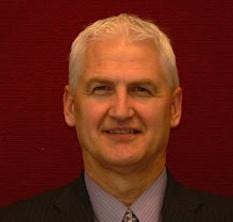Saanich became the 19th school district in British Columbia to adopt a stand-alone anti-homophobia policy on June 20, receiving unanimous support from the board.
“This is something I knew was happening in other districts, and I really wanted to see it happen in Saanich,” says teacher Diane Cacciato, who has been the gay-straight alliance (GSA) sponsor at Stelly’s Secondary since 2006.
“I have to say, in terms of how queer youth get treated in some schools, our district is pretty good,” she says. “There are problems, of course; if there weren’t we wouldn’t need this, but I don’t think our kids, for the most part, fear for their safety. But they certainly face harassment at the hands of some students, and there is kind of widespread use of hate slang that straight kids don’t even think twice about.”
Cacciato describes the new policy as a huge first step in changing the attitudes of students, staff and administrators.
“It has to be taken seriously by the employees at the various schools,” she says. “When that happens we can implement change with students. If, for example, a queer student goes to a staff member and says, ‘I’m being harassed, bullied,’ then the teacher has the backing of the board to do something about it. It’s not hit and miss depending on the attitudes of the school’s administrator.”
Saanich superintendent Keven Elder says the school district considered such a policy three years ago but put it on hold after consultations with local GSAs, whose members felt it unnecessary because, they said, homophobia was adequately addressed in existing policies on human rights, social behaviour and anti-discrimination.
“We listened to the students of the day and respected that and understood it,” Elder says.
But a year ago, he decided to begin the process anew. Elder told the board that he would develop a policy and create a steering committee to look at drafts in other districts. He then met with GSAs and GSA equivalents from area schools to identify the issues and find the best ways to approach them through policy.
“There was no particular moment or incident,” he says of the timing. “It was just a time when it became clear to me that I realized its time has come. The incentive for me professionally was more societal than school-based. It appeared to me to be a growing awareness of the importance of addressing these matters through descriptive and prescriptive policies or other statutory framework.”
Elder believes stand-alone anti-homophobia policies are best addressed by individual school boards rather than provincial government.
“I think this work is best done at the district level, as evidenced by the success in not just creating policy, but engaging community in these great conversations, which is easier to do at the community level,” he says. “What I believe to be true is that most districts are engaged in these conversations.”
Last month students from Hope Secondary’s GSA called on the Fraser-Cascade school board to adopt a stand-alone anti-homophobia policy as well. On June 19 the board referred their information to a committee to consider revising current district policies at their next meeting, in October.
On the same evening, the Bulkley Valley school district, which includes the community of Smithers, received a presentation from the Bulkley Valley Teachers’ Union also asking for anti-homophobia policy. The presentation was “well received,” says teachers’ union president Karin Bachman.
Bachman says the district has committed to working on policy when the board next meets in the new school year.

 Why you can trust Xtra
Why you can trust Xtra


